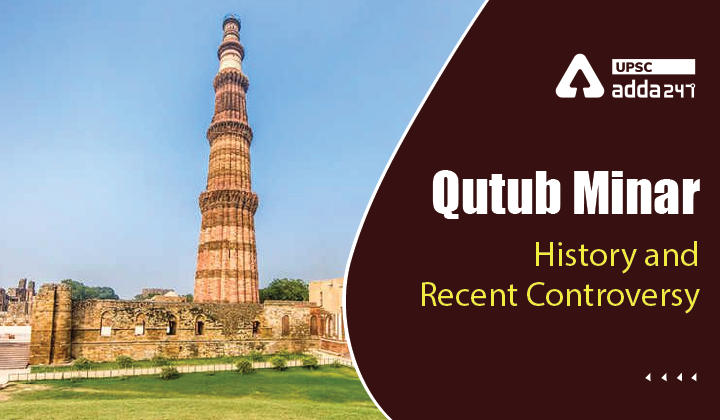Table of Contents
Qutub Minar- Relevance for UPSC Exam
- GS Paper 1- Indian History- Indian culture will cover the salient aspects of Art Forms, Literature and Architecture from ancient to modern times.
Qutub Minar in News
- Recently the Archaeological Survey of India (ASI) submitted in a Delhi court that the Qutub Minar complex is not a place of worship and its character cannot be changed now.
- SAI responded in the court while opposing a plea challenging the dismissal of a civil suit seeking “restoration” of Hindu and Jain temples on the premises.
Qutub Minar Controversy- The Story So Far
- A petition was filed in a court which claimed that 27 temples were demolished to build the Quwwat-ul-Islam mosque at the Qutub Minar complex.
- The petition was dismissed last year under the provisions of Places of Worship (Special Provisions) Act, 1991.
- However, petitioner disputed it by saying that dismissal of the original suit based on the 1991 Act was wrong as the Qutub Minar complex comes under the purview of the Ancient Monuments and Archaeological Sites and Remains (AMASR) Act of 1958.
- The ASI, however, submitted that the Qutub Minar complex was not a place of worship when it was first notified as a protected monument in 1914.
- ASI explained that the character of a monument is decided on the date when it comes under protection.
- ASI said that the petitioner cannot at this juncture seek to change the character of the monument.
National Monument Tag to Anang Tal Lake
About Qutub Minar
- About: Qutub Minar is a five-storeyed red sandstone tower (72.5 m high), construction of which begun in 1192 by Qutbu’d-Din Aibak and completed in 1198, using the demolished remains of Hindu temples.
- Modification: Qutub Minar was enlarged by Iltutmish (1211-36) and again by Alauld-Din Khalji (1296-1316).
- In 1503 Sikandar Lodi carried out some restoration and enlargement of the upper storeys.
- Importance: Qutub Minar was built in thirteenth century by muslim rulers to commemorate their final triumph over the Rajput rulers of Delhi (Qutub means victory).
- It also served as a tower from where muezzins (criers) call for prayer at the Quwwatu’l-Islam mosque nearby.
- Iron Pillar within Qutub Complex: The iron pillar in the mosque compound was brought from elsewhere in India.
- It bears a Sanskrit inscription from the 4th century AD describing the exploits of a ruler named Chandra, believed to be the Gupta King Chandragupta II (375-413).
- Other Important Monuments in the Qutub Minar Complex: The surrounding archaeological area contains funerary buildings, notably-
- The magnificent Alai-Darwaza Gate, the masterpiece of Indo-Muslim art (built in 1311), and
- Two mosques, including the Quwwatu’l-Islam, the oldest in northern India, built of materials reused from some 20 Brahman temples.
- A UNESCO World Heritage Site: Qutub Minar and its monuments were declared a UNESCO World Heritage Site in 1993.





 TSPSC Group 1 Question Paper 2024, Downl...
TSPSC Group 1 Question Paper 2024, Downl...
 TSPSC Group 1 Answer key 2024 Out, Downl...
TSPSC Group 1 Answer key 2024 Out, Downl...
 UPSC Prelims 2024 Question Paper, Downlo...
UPSC Prelims 2024 Question Paper, Downlo...




